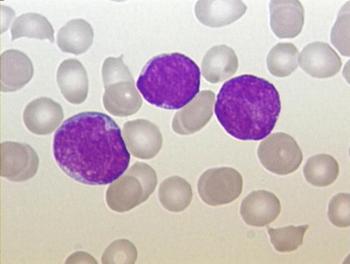
Elacestrant Combos Can Open New Pathways in ESR1 Breast Cancer Treatment
Multiple targeted therapies/sequencing possibilities are available following elacestrant’s approval for patients with breast cancer, Maxwell Lloyd, MD, said.
According to Maxwell Lloyd, MD, a fellow in hematology-oncology at Beth Israel Deaconess Medical Center, elacestrant (Orserdu) has become a viable treatment for patients with ESR1-mtutated metastatic breast cancer, particularly in the later lines of treatment, and also offers many potential sequencing opportunities. Elacestrant was previously approved by the FDA for the treatment of patients with estrogen receptor (ER)–positive, HER2-negative, ESR1-mutated advanced or metastatic breast cancer.1
Lloyd spoke with CancerNetwork® at the
Additionally, he mentioned the several targeted therapies that are possible in metastatic breast cancer if a patient experiences disease progression after first-line endocrine therapy and CDK4/6 inhibitors. There are still more questions regarding optimal sequencing, but Lloyd emphasized that ongoing investigations are searching for those answers.
Transcript:
The use of elacestrant is appropriate in any patient with ESR1-mutant metastatic breast cancer. In terms of optimal sequencing, we, in practice, think about patients as either having endocrine-sensitive or endocrine refractory disease, in which case, providers may start to reach for lines of chemotherapy or antibody drug conjugates. We have seen that with the initial approval of elacestrant and its deployment in the real-world setting, a lot of patients in the later lines [of treatment] received elacestrant, and we saw similar therapeutic outcomes, even in those patients who were more heavily pretreated or had received prior chemotherapy. It remains a treatment option as an endocrine monotherapy for even those patients, but we will see it being reached for more in the second-line or potentially third-line setting, where we tend to think of patients with breast cancer that may be more endocrine therapy-sensitive.
In terms of sequencing with some of the other approved agents, we have several targeted therapies and combination strategies in the metastatic breast cancer setting after [disease] progression on a first-line endocrine therapy and CDK4/6 inhibitor. There are some open questions that remain in terms of optimal treatment sequencing in the second and third line, whether it’s reaching for an endocrine therapy-based strategy or a targeted therapy-based strategy if a patient has a tumor genomic profile that has multiple potential targets. Ongoing investigations will be important to elucidate what the best sequencing of therapies in those patients is and if there are other clinical or genomic biomarkers that we can leverage to determine who’s going to benefit most.
Reference
FDA approves elacestrant for ER-positive, HER2-negative, ESR1-mutated advanced or metastatic breast cancer. News Release. FDA. January 27, 2023. Accessed December 16, 2024.
Newsletter
Stay up to date on recent advances in the multidisciplinary approach to cancer.

















































































